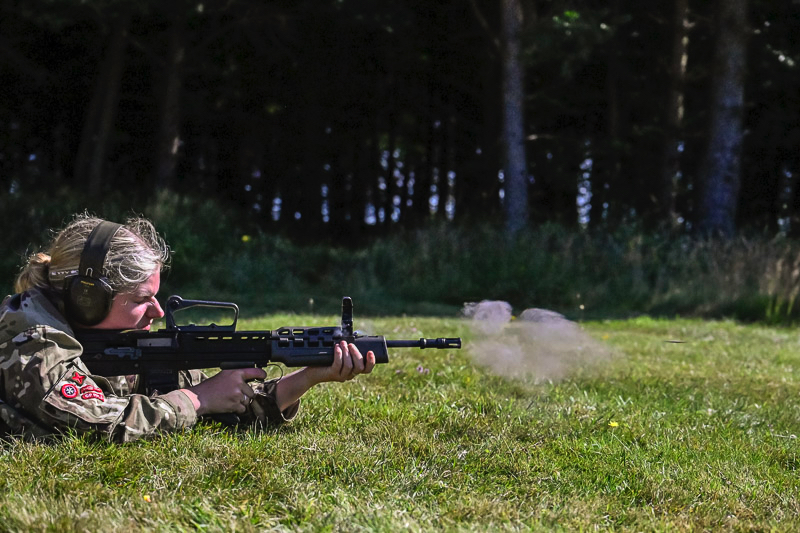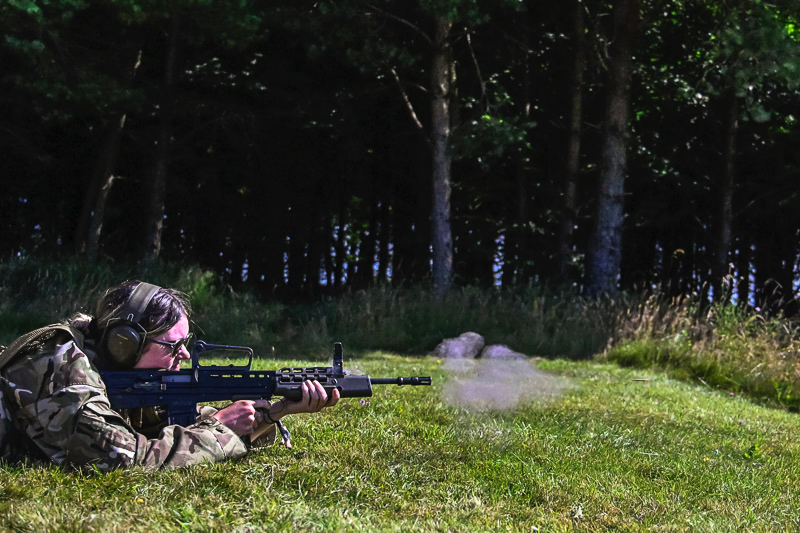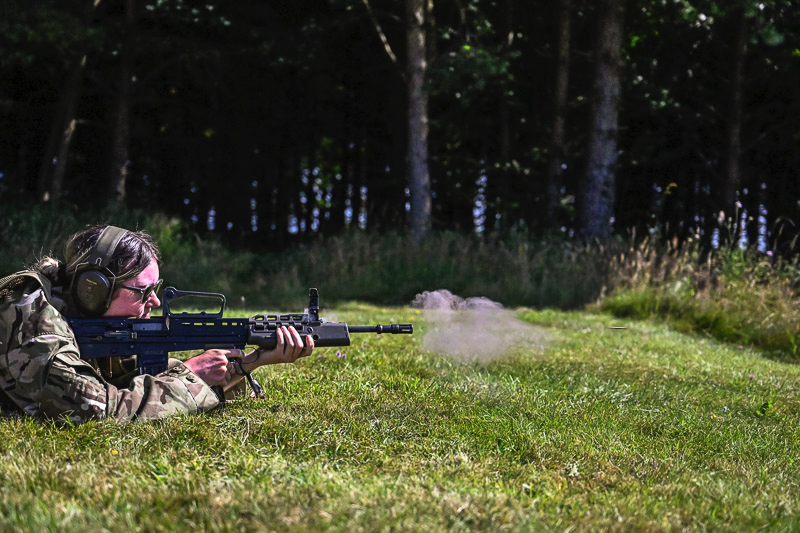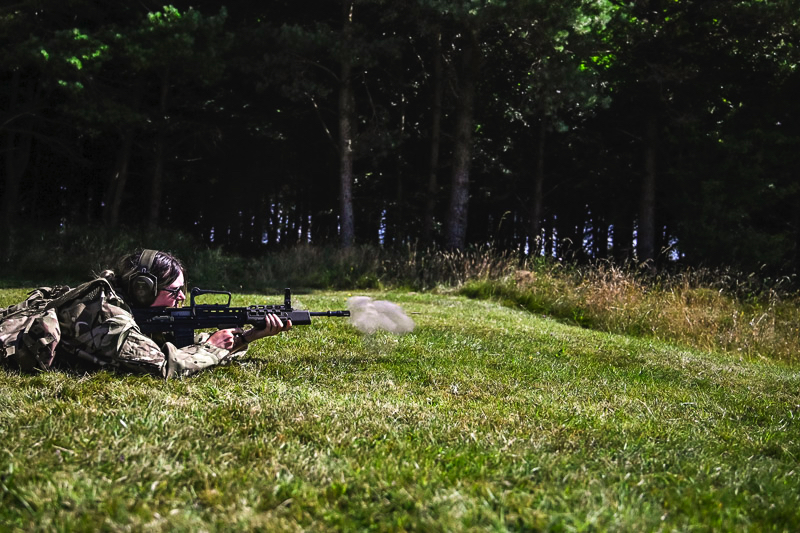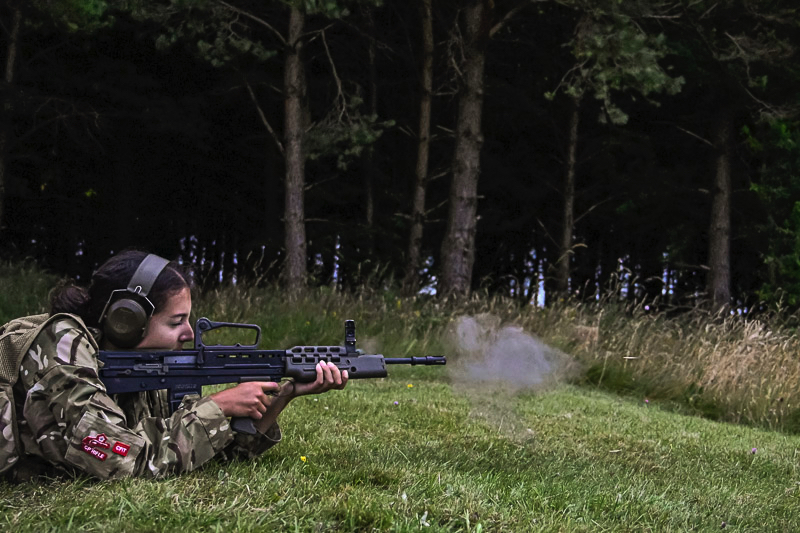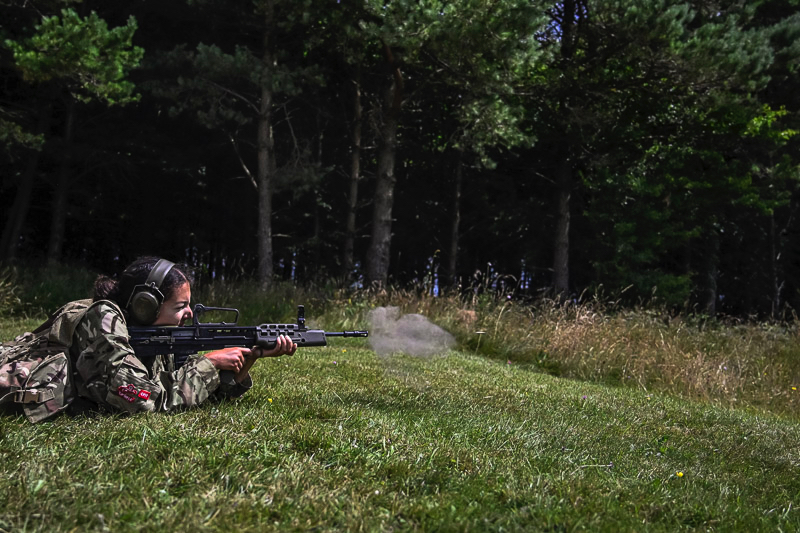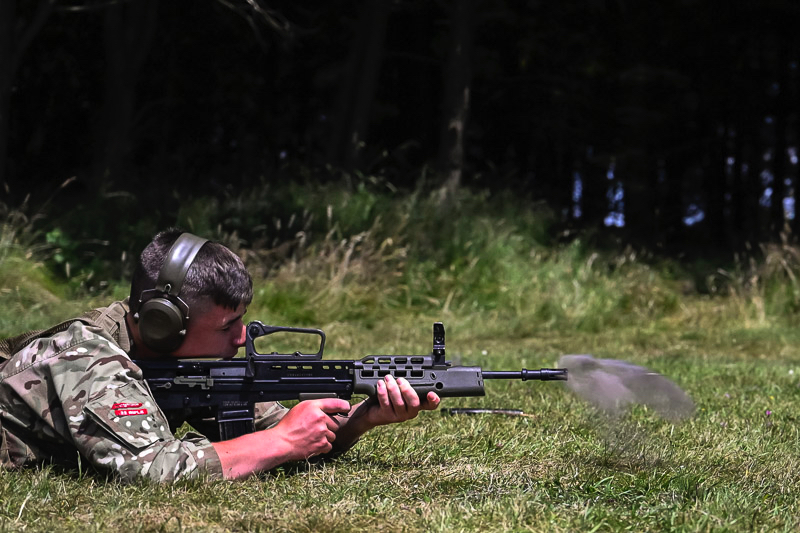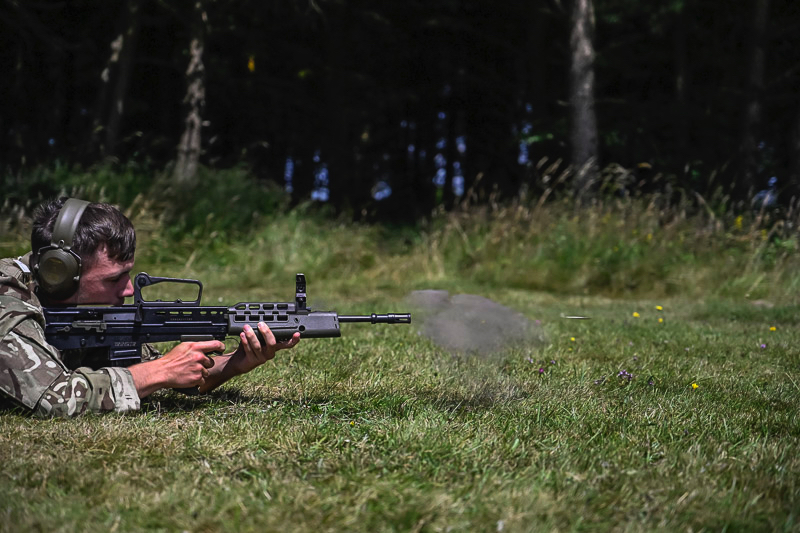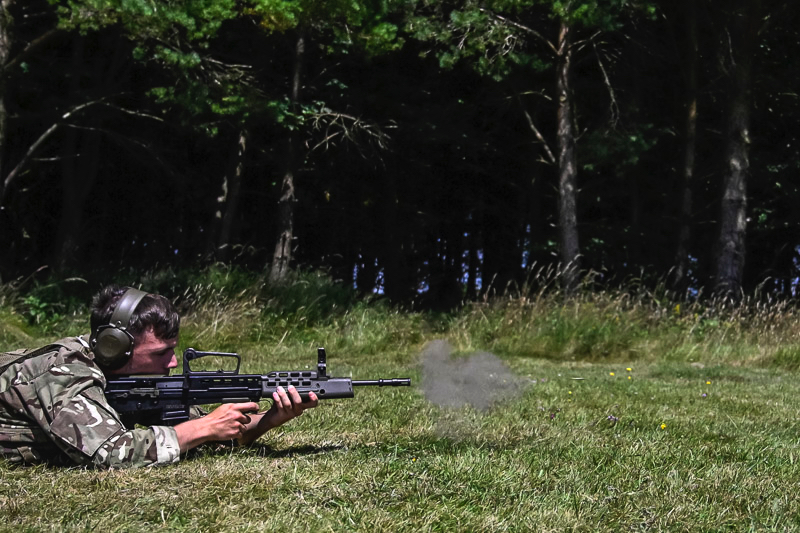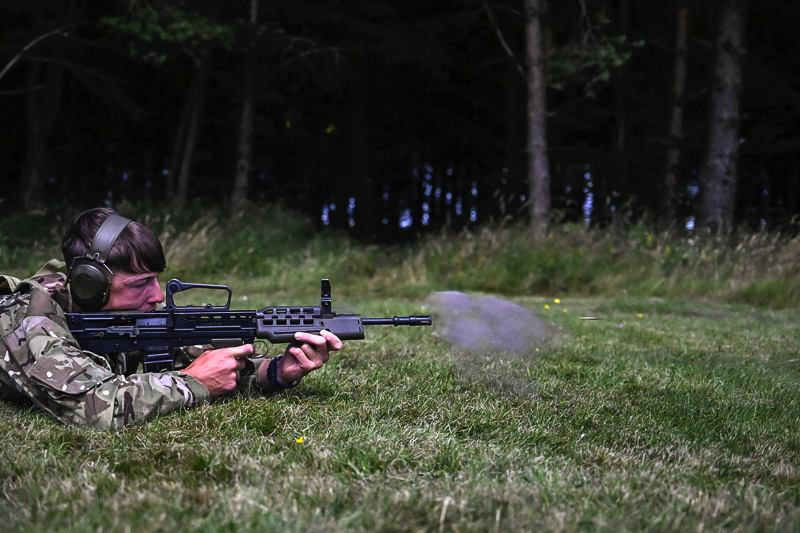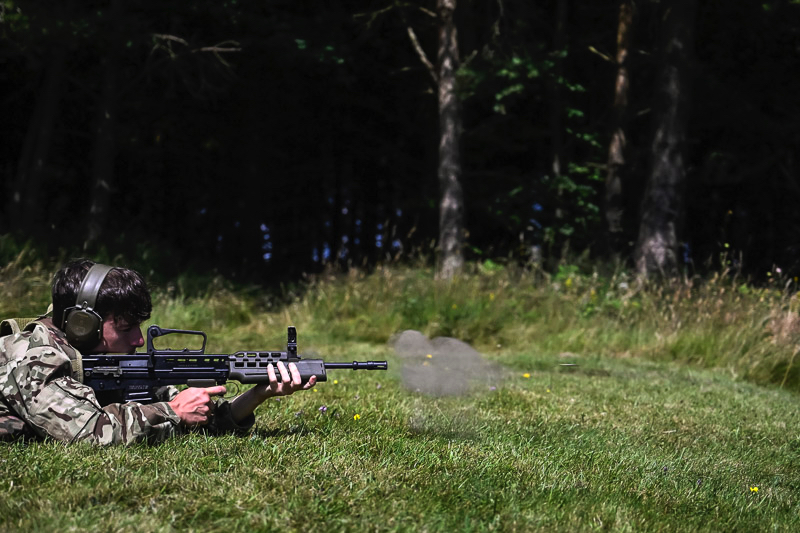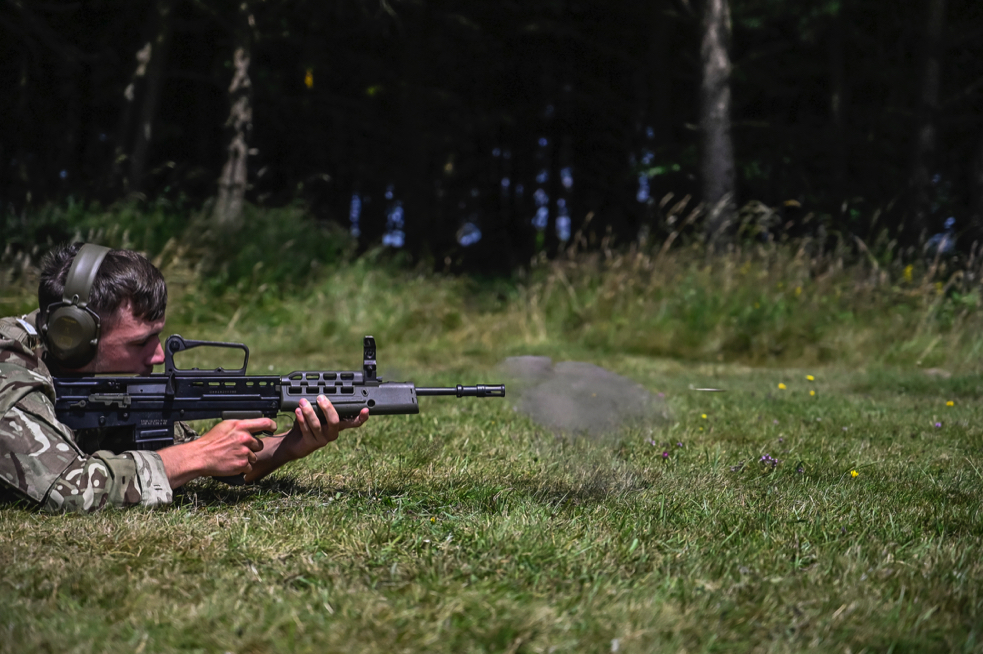One of the reasons I was particularly keen to get the Z 9 was to photograph a bullet in flight after seeing a photograph taken at a Norwegian biathlon by a Nikon Z 9 armed photographer, with a rifle round visible leaving the muzzle of a match rifle.
Whilst I was not expecting the task to be the easiest that I had ever undertaken, I seriously underestimated the effort involved.
Upon my initial receipt of the camera I decided that in order to gain some practical experience with photographing projectiles in flight I would start with something easy, namely air rifle pellets.
After taking over 4000 images, using the 120 frames per second option at 1/32,000th second shutter speed I had absolutely nothing to show for my efforts - not a single pellet on any frame! That’s when I thought that maths and ballistics, rather than a scatter gun approach, would be able to help solve my problems. Where was I going wrong?
Well two things immediately sprang into focus - I was far, far too close to the anticipated action and I had no idea about the speed and thus how far a pellet would travel.
A typical .22 in air rifle pellet has a muzzle velocity of no more than 200m/s, and usually less, in contrast to the 5.56mm ammunition that I was intending to capture which has a muzzle velocity almost five times that.
Thus for a .22 in pellet:
In 1/125 sec the pellet travels around 1.7m - using the slowest shutter speed to get 120 frames in one second
In 1/250 sec the pellet travels around 0.85m
In 1/500 sec the pellet travels around 0.42m
In 1/1000 sec the pellet travels around 0.21m, and so on. So shooting an air rifle pellet at 120fps, at ANY shutter speed faster than 1/125th sec, means that the image frame would need to be at least 2 metres wide to have any chance of catching the pellet in flight.
By contrast, 5.56mm ammunition has a muzzle velocity that varies between 851 m/s and 993 m/s, so I’m using 900m/s as a notional starting point.
Thus:
In 1/125 sec the rifle bullet travels around 7m - using the slowest shutter speed to get 120 frames in one second
In 1/250 sec the rifle bullet travels around 3.5m
In 1/500 sec the rifle bullet travels around 1.7m
In 1/1000 sec the rifle bullet travels around 0.85m.
So shooting a bullet at 120fps, at ANY shutter speed faster than 1/125th sec, means that the frame would need to be at least 7m wide, if not closer to 15 metres wide, to have any chance of catching the bullet in flight somewhere in a frame. Remember that shooting at 1/32,000th sec sounds impressive, but think about what this really means; it means that you are actually missing 31,999ths of every second! What are the chances of the bullet being in exactly the right place within the picture area for the correct 1/32,000th of a second, bearing in mind that you’ve only got 120x chances of grabbing only 120/32,000ths of every second - not good odds!
In fact by photographing at slower shutter speeds theory dictates that you significantly increase your chances of catching a bullet in the frame, doubling your chances each time you double the shutter speed. The downside is that IF you catch the bullet in the frame it will exhibit much more movement.
So while technology is wonderful, as I discovered it needs skill and planning, allied to a huge dollop of luck and being much further away from the subject than you initially think you need to be.
So I recently spent the day on the rifle range, armed with my new set of computations, although with no real expectation of being able to get anything useful. I varied my distance from the shooter, using the NIKKOR Z 70-200mm f/2.8 VR S lens, starting off by shooting at right angles to the line of flight and with a distance from left to right of the frame of somewhere around 7-10 metres. I had the luxury of time and lots of ammunition to vary the shutter speeds for each sequence, starting from 1/500th sec and going all the way to 1/32,000th sec.
I shot 20,922 images during the day but was unable to review them until putting them on my Mac later in the evening. At first glance things didn’t look too hopeful, but then I noticed that bullets leave a signature, particularly under the ideal weather and lighting conditions. Swirl, dust and debris - all create a trace of a bullet passing. Thus I was able to track back to the initial visible point of firing, the smoke exiting the muzzle. By the time the smoke leaves the barrel the bullet will be long gone, so tracking back from that and keeping a close eye on the firer’s trigger finger, I was able to begin to distinguish images that exhibited what I was looking for.
To my amazement I discovered that I had obtained a success ratio of 1:2000, capturing the flight of ten bullets with varying degrees of success, mainly dependent on shutter speed. The most obviously ‘bullet looking’ images were ones taken at speeds shorter than 1/10,000th sec, which is understandable, although even some at 1/500th sec exhibited ‘stretched’ bullets.
However I wasn’t satisfied with the shots so these images, and the main header for this story, are from my second attempt to use my Nikon Z 9 to catch bullets in flight, with techniques refined from the first attempt, with less cluttered backgrounds accomplished by rearranging the range to suit my requirements. However this time I used the NIKKOR Z 24-70mm f/4 lens - simply because my position allowed for no other option.
With the benefit of hindsight and experience a longer lens is preferable if the situation allows for this. Photographed at right angles to the line of fire this means that if you focus on the rifle’s muzzle the bullet will always be in focus during its flight, with a shallow depth of field allowing the bullet to be seen more clearly against an out of focus background.
People have suggested that a viewpoint behind the firer, looking down the range, is perhaps a better position from which to catch the bullet, as it is possible to see the bullet - and certainly the ‘swirl’ that it makes through the air - from this position with the naked eye under the right conditions. The sober reality for still photography though is that it seldom works because at 950m/s the bullet reduces in size in the frame so rapidly that you’d have to be able to catch it within a foot or so of the muzzle to have any chance of seeing it at a decent size in the image. Naturally with sound or beam splitter triggering systems that shouldn’t present much of a problem, but on an open air, military range with very tight safety parameters it’s not so easy. Conversely, having the camera placed in front of the shooter, so that the bullet size increases as it moves towards the camera, should also be good, but that viewpoint is limited by the range safety template. Some of my early shots were done about four or five feet ahead of the line of firers, although well to one side and they also produced good results, although with cluttered backgrounds. Having a remote controlled camera in front is also another viable option, providing one can trust the shooter not to aim at the camera!
On my second attempt the ratio of shots taken to getting a successful capture was shocking! I took 51,598 images of 300 rifle rounds expended, getting ‘only’ 36 images with bullets captured in flight. The majority were taken at 1/32,000th sec, which on reflection is probably too short a shutter speed - 1/8,000th to 1/16,000th sec is better from an aesthetic point of view and gives a 2x to 4x better chance of catching a bullet in flight, even if the round appears slightly elongated.
I also discovered that my initial presumption that the original shot that prompted this exercise, of a Norwegian Biathlete shooting what I presumed was a 7.62mm NATO round travelling at around 2,900m/s, was wrong when a Norwegian Biathlete contacted me to say that they use .22in LR ammunition which ‘only’ has a muzzle velocity of between 350-500m/s. So in reality I had succeeded beyond my wildest dreams, something that Nikon UK acknowledged when they said that they’d never seen shots like this in uncontrolled conditions. So in a total of 71,922 shots I managed to capture bullets in flight in 46 frames!
That said though, without a Nikon Z 9 I could not have achieved anything. I am planning to get a second body, so impressed am I by its capabilities. However, this is not something that I will be doing on a regular basis, simply because the job of actually finding these critical shots amongst 71,000 images is a massive task in itself. It’s just good to know that the hitherto uncatchable is now capable of being caught! No longer is a photo of a rifle firing defined by showing the empty cartridge case ejecting.
My thanks are due to Maj Damion Deakin, OC HQSW CTT, and Rob MacNeice from Nikon Professional Services for their help and encouragement.
Nikon Z 9 - Catching a bullet in flight
